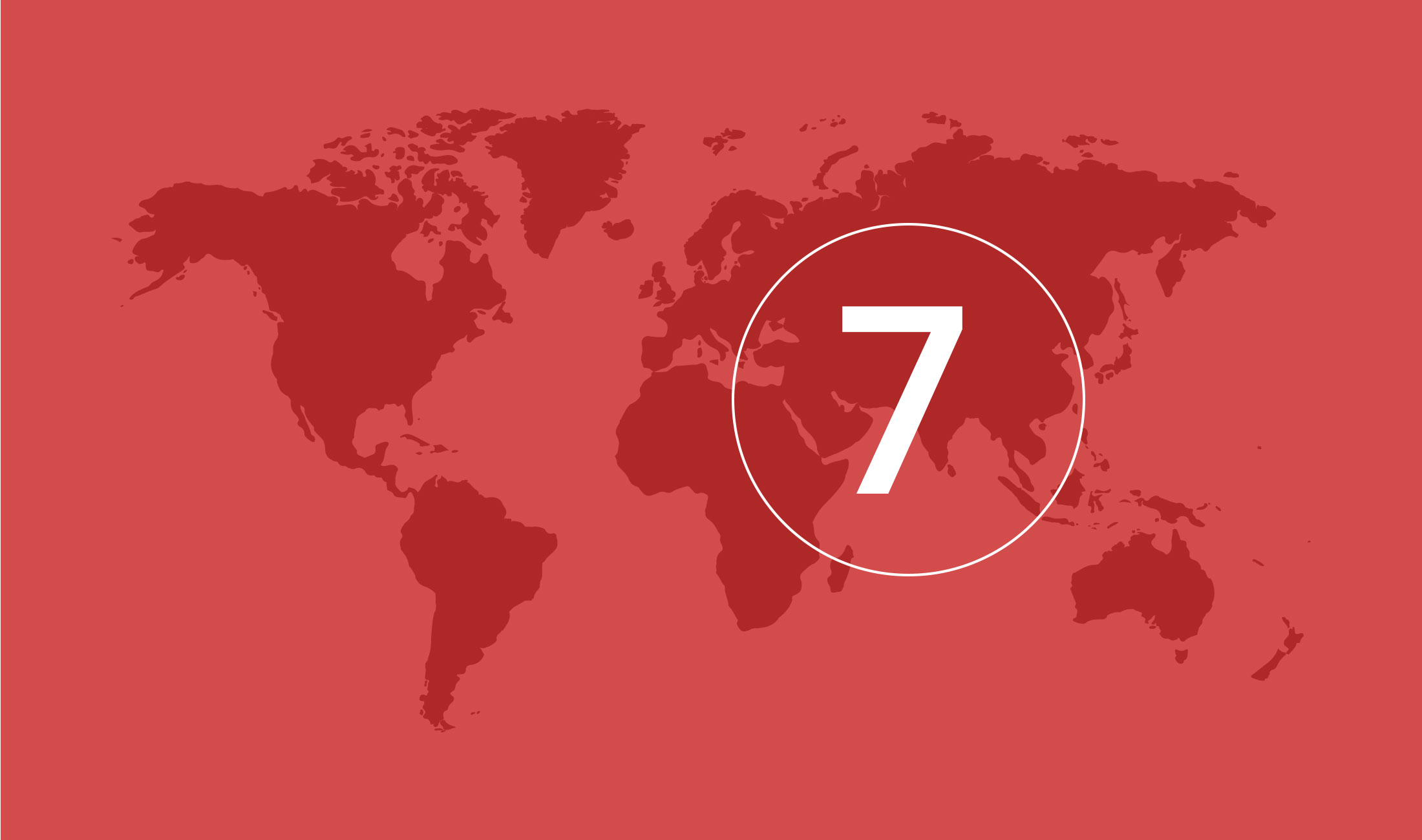
Pakistan
Category
7 of 7
| Risk type | Short | Long |
|---|---|---|
| Sovereign | ||
| Public | ||
| Bank | ||
| Corporate |
The icons indicate EKN's risk assessment.
A lower country risk category means a lower country risk. The icons mark EKN's ability to cover risks to different buyers in the country.
-
No policy established
- EKN has not analysed this country recently and therefore has no current opinion. If an exporter submits an application for such a country, EKN performs an analysis of the country at short notice and determines a policy.
-
Normal risk assessment
- EKN decides on guarantee issue based on an assessment of risk in the transaction. There are no predefined restrictions in the risk assessment or assumptions for risk assessment.
-
Restrictive risk assessment
- EKN sets stricter requirements in the risk assessment in order to guarantee a transaction. EKN may have specified special criteria that are key to the risk assessment of the guarantee holder category in question. This may mean that EKN sets a requirement that the counter party must have its own hard currency earnings or that external support can be expected, or that EKN sets a requirement for a letter of credit, government or bank guarantee. If the formulation of the transaction deviates from a defined restriction, we normally set more stringent conditions and may in the worst case refuse to guarantee the transaction. More stringent conditions may be that we reduce the sum guaranteed, raise the premium or require some form of security.
-
Normally off cover
- Here EKN does not normally cover currency transfer risks. However in some circumstances EKN may be able to go further with high risk countries than the restrictions of the country policy indicate. The application is then tested under the so-called GSL facility, which refers to guarantee issue with special country evaluation. There are specific requirements for this, primarily that the exporter has experience of the market in question. The risk is then shared with the exporter and by means of a mark-up on the premium.
-
OECD or EU countries
- Because of EU rules, EKN cannot issue guarantees for transactions with a risk period of less than two years for exports to Australia, EU countries, Iceland, Japan, Canada, Norway, New Zealand, Switzerland or the USA. If you have any questions, please telephone us on +46 8-788 00 00.
Country risk analysis
Country Risk Analysis of Pakistan
The latest Country Risk Analysis of Pakistan was issued in July 2025.
Structural challenges hamper growth potential
With the world’s fifth-largest population at 251 million, Pakistan has a relatively large domestic economy, providing some degree of growth potential and resilience. The economy is driven by household consumption (exceeding 80 percent of GDP), while investments remain low (under 15 percent of GDP). On the production side, the services sector dominates.
The important agricultural sector (23 percent of GDP) employs 36 percent of the workforce, while the manufacturing sector is underdeveloped. As an energy and commodity importer with weak competitiveness, imports of goods and services are nearly twice the size of the narrow export base (10 percent of GDP), which is dominated by textiles and agricultural products. The main source of foreign exchange earnings is remittances (8 percent of GDP), with over half coming from the Gulf States.
These inflows stabilise consumption and finance most of the structural trade deficits. However, high debt servicing means the current account tends to remain in deficit, and the economic structure causes the deficit to widen whenever economic activity picks up. Therefore, low levels of foreign direct investment (FDI) necessitates a reliance on external financing and a vulnerable external position. The economic structure tends to cause the deficit to widen whenever there is a significant pick-up in economic activity.
Pakistan, one of the poorest countries in Asien, faces major structural challenges. An average GDP growth rate of just 3.5 percent between 2015–2024 is insufficient to generate employment for a rapidly growing young population. This contributes to social and religious tensions, which, together with strained relations with India, pose an inherent risk of political instability. Pakistan experiences violence from militant Islamism and separatist conflicts in parts of the country.
The security situation has worsened since the Taliban takeover in Afghanistan in 2021. Public finances are weak, with structural deficits resulting from low tax revenues, subsidies in the agriculture and energy sectors, and a large, unprofitable state-owned enterprise sector. Public debt is high, at around 75 percent of GDP, and interest payments consume over 45 percent of government revenue. While most of the debt is domestic, reducing currency risk, it also means lending to the public sector accounts for 60 percent of bank assets, exposing the banking system to sovereign risk. This crowds out private sector lending and hampers the government’s ability to mobilise financing to handle new shocks and contributes to underdeveloped infrastructure.
Since 2015, major infrastructure investments, mainly in the energy sector, have been made through the China-Pakistan Economic Corridor (CPEC). However, the terms of these often debt-financed projects raise questions about their capacity to generate sufficient growth dynamics and competitiveness to enable repayment.
Parliamentary democracy was reinstated in 2010, but behind the scenes, the military exercises significant and in recent years growing influence over politics. This frictional co-governance with civilian administrations contributes to frequent political turbulence and premature changes in government. Powerful economic interests from the military, a large state sector, and a dynastic political elite often conflict with much-needed reforms, particularly efforts to liberalise and open the country’s inward-looking economic structure.
As a result, governments struggle to sustain structural reforms. Given its geostrategic position, Pakistan tends to secure external support from multilateral development banks and allies such as China and the Gulf States. However, there are indications that bilateral support will increasingly be provided on commercial terms and conditional on reform progress .
Positive trend of stabilisation and reforms
Economic stabilisation has been achieved following the crisis years of 2022–2023. A series of disruptions and political unrest ahead of the disputed 2024 elections drove inflation higher, while GDP contracted and fiscal and external finances came under pressure. A balance of payments crisis was averted thanks to IMF support programmes and financing from China and the Gulf States. A new IMF programme, launched in autumn 2024 (running until Q3 2027), now anchors economic policy. Inflation has declined, allowing policy rates to be cut significantly.
The current account deficit has narrowed, while foreign exchange reserves have stabilised, albeit at relatively low levels. Following major depreciations in 2021–2022, the exchange rate is now weakening more gradually. External risks include the conflict in the Middle East and its impact on oil prices, as well as uncertainty over US trade policy. The IMF forecasts low but positive growth in the coming years. Similar to the previous fiscal year, GDP growth is expected to reach around 2.5 percent in FY2025 (ending June 2025), strengthening to 3–4 percent over the following two years.
Strengthening public finances is a key priority of the IMF programme. Several positive developments can be noted. Coordination between federal and provincial levels is being strengthened. A belt-tightening policy involving stricter investment prioritization, reduced subsidies through higher cost recovery in energy tariffs, and increased tax collection, including through digitalisation, has led the budget to show a small primary surplus (excluding interest payments) for a second consecutive year.
The FY2026 budget maintains the consolidation focus, despite increased defence spending. This supports the trend of a gradually declining debt ratio, which could accelerate if reform efforts to broaden the tax base to the agriculture and property sectors succeed. Efforts continue to attract investment, especially from the Gulf States, China, and Turkey, which could eventually strengthen the country’s export capacity. Other reforms underway include the gradual rationalisation of Pakistan’s complex trade tariff structures and privatisations in the energy sector. The government’s willingness to embark on these politically sensitive reforms is positive, although implementation risks remain significant.
Pakistan faces large external debt repayments in the coming years, and with weak institutions and fragile public and external finances, the economy remains vulnerable to new shocks. There is awareness that cooperation with the IMF—often marked by friction—is essential to secure external financial support, and developments over the past two years point to a positive economic trend.
Pakistan’s high exposure to climate change
The significance of agriculture, challenges from high population pressure, and a fossil-heavy energy mix all contribute to Pakistan’s high vulnerability to climate change. The country is among the ten most affected globally by extreme weather over the past decade. The frequency of extreme weather is expected to rise, while investments in climate adaptation lag.
The World Bank (2022) estimated climate-related investment needs for 2023–2030 at USD 348 billion—equivalent to 10 percent of cumulative GDP over the period—which would require extensive external financing. There is significant potential in renewable energy, and capacity from renewables and nuclear power is expanding, which could eventually reduce fossil fuel imports.
In ND-GAIN’s index measuring vulnerability to climate change and adaptive capacity, Pakistan ranked 146 out of 181 countries (2023). The consequences of climate change are difficult to quantify, but model estimates from the Asian Development Bank (2024) and World Bank (2022) point to potential GDP losses of over 10–20 percent by 2050 compared with scenarios without further climate change.
Business environment
Pakistan’s business environment is weak, reflected in low FDI and private investment relative to GDP. In the World Bank’s Governance Indicators (WBGI), scores for economic institutions are about 50 percent lower than the average for Asian emerging and developing economies. In Transparency International’s Corruption Perceptions Index, Pakistan ranked around 135 out of 180 countries in 2023–2024. This is a slight improvement from 140 in 2021–2022, but still well below the regional average of 93.
Challenges in the business environment include a historically volatile macroeconomy, weak institutional frameworks, and a difficult security situation. Pakistan’s tendency to face balance of payments difficulties contributes to a shifting regulatory environment regarding foreign exchange, tariffs, and import restrictions, which can at times hinder importers’ ability to obtain foreign exchange for payments abroad. Thanks to the recent macro-stabilisation, these challenges have eased significantly compared with the crisis years of 2022–2023, and the import and currency restrictions that paralysed industry during the crisis have been lifted.
Predictability in the business environment is hampered by inconsistent regulations and enforcement between provinces and authorities, weak institutions, and corruption. A 2024 constitutional amendment sets the goal of abolishing all forms of interest by December 2027, creating uncertainty around the future design of financial transactions. A large state-owned enterprise sector and the military’s expanding commercial interests in various sectors risk distorting competition for private companies. Structural issues in the energy sector result in unreliable electricity supply and chains of unpaid bills accumulating in the economy.
Complex protective tariff structures, non-tariff barriers, and a limited network of free trade agreements hinder integration into global value chains and hamper export sector development.
Efforts to improve the business environment have long been on the reform agenda. However, the pandemic, turbulent domestic politics, and resistance from vested interests have undermined the durability of these efforts, yielding only modest progress. Recently, focus appeared to have shifted from broad systemic improvements to enhanced management of individual large-scale projects. In 2022, the Foreign Investment Promotion and Protection Act was passed, allowing parliament to grant special incentives to major investment projects.
In 2023, the Special Investment Facilitation Council was established, including senior government, military, and provincial representatives, to promote investment and improve coordination in support of planned major projects in the refinery and mining sectors. The IMF cooperation includes a privatisation programme, tariff rationalisation, and reforms to streamline regulations and
processes for licensing, customs clearance, and taxation through digitalisation.
From EKN’s credit perspective, key aspects of the business environment include the predictability and quality of regulations affecting debtors’ operations and the country’s legal and institutional frameworks affecting creditors’ rights concerning insolvency, collateral, and more. According to the WBGI, the regulatory environment is significantly weaker than the regional average, as is the legal environment, where structural weaknesses and lengthy court proceedings can hamper recoveries.
For example, company liquidation is reported to be an extremely drawn-out process. However, the legal framework is being gradually upgraded: in 2016, provisions were introduced for asset management companies to acquire banks’ non-performing loans; security legislation came into force in 2020 along with the establishment of an electronic collateral registry, although the focus remains on financial institutions’ collateral.
A specific bankruptcy law is still lacking, but corporate insolvency and restructuring are governed by the Companies Act (2017) and the Corporate Rehabilitation Act (2018), which introduced court-driven restructuring processes. The effectiveness of these frameworks is hampered by an overburdened judiciary and the slow development of legal precedents. EKN has limited experience with debt recovery in Pakistan but establishing collateral for larger credits is advisable.
In the corporate sector, family-owned conglomerates tend to dominate among major companies and private banks. Availability of financial information is relatively good for banks and listed companies, which report according to IFRS standards. A new law (SOE Act 2023) requires commercial state-owned enterprises to start publishing audited IFRS-based accounts by 2026.
EKN’s business assessment considers the risk of negative impacts on human rights (HR), focusing on potential impacts arising from activities where exported goods will be used. Relevant issues include working conditions, child and forced labour, excessive use of force by security forces, indigenous peoples’ rights, and land rights.
In Maplecroft’s HR index, Pakistan scores somewhat higher risk levels than other lower-middle-income countries across most dimensions (data for indigenous peoples’ rights are unavailable). This also applies to the sub-index for security forces and human rights, reflecting the longstanding security challenges in provinces such as Khyber Pakhtunkhwa and Balochistan bordering Afghanistan.
EKN’s policy
EKN classifies Pakistan in country risk category 7 (on a scale of 0 to 7). In June 2024, relaxations were introduced in the previously very restrictive country policy. For public buyers, letters of credit or bank guarantees are required for short risk tenors (up to one year), and restrictions apply for longer tenors. For companies, elevated premium rates apply.
EKN’s commitment and experience
EKN’s exposure amounts to approximately SEK 1.5 billion, dominated by sovereign and bank counterparties. Between 2020–2024, EKN issued guarantees in 385 transactions for around 30 exporters totalling SEK 3.5 billion, at similar levels to 2015–2019. The flow is dominated by sovereign-related counterparties, telecoms, and buyers of paper and packaging materials. SMEs and trading houses account for just under 25 percent of guarantee volume, with 51 percent of deals involving credit terms up to one year.
EKN’s payment experience is good; only one claim has been paid over the past decade. Of guarantees issued between 2020–2024, payment delays occurred in less than five percent of transactions, with average delays lasting 93 days. The low frequency of claims and delays is partly explained by the high share of transactions using letters of credit. The Pakistani government continues to make regular payments on bilateral debts covered by Paris Club agreements from the 1999–2001 debt restructuring; as of mid-2025, just under SEK 60 million remains outstanding.
More for companies that want to export to Pakistan

EKN's guarantees
EKN's guarantees reduce the risk of payment defaults and help banks support businesses. Which guarantee suits your needs?
EKN's guarantees
Guarantee guide
Are you unsure which guarantee is the best fit for your specific transaction? Try our guarantee guide.
Guarantee guide